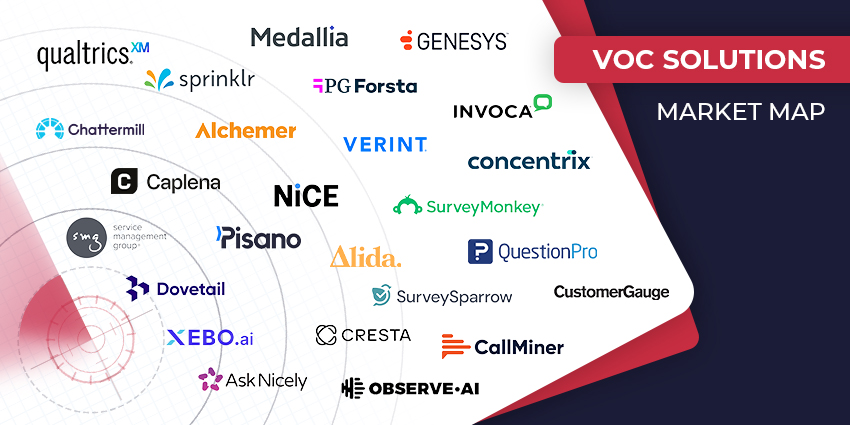Customer feedback often provides critical insights that help improve CX. In addition, it is an excellent source for measuring and benchmarking the quality of experiences.
There are many sources of customer feedback, including social media, third-party review sites, and even analytics tools. These may offer positive, negative, or simply constructive insights, from which companies can spot trends and gain learnings.
To make the most of such fruitful sources of customer feedback, here are 11 excellent collection methods.
1. Discussions With Contact Center Agent
As one of the most popular methods of collecting customer feedback, surveys collect feedback regarding a specific issue that the company wants to investigate. Yet, there are other types of surveys, such as a satisfaction survey, which investigate what drives customer happiness. These surveys are typically run through tools such as SurveyMonkey and Google Forms. More advanced survey tools also exist – including Medallia and Qualtrics – for companies looking to piece together a more comprehensive feedback strategy.
2. Customer Surveys
As one of the most popular methods of collecting customer feedback, surveys collect feedback regarding a specific issue that the company wants to investigate. Yet, there are other types of surveys, such as a satisfaction survey, which investigates what drives customer happiness. These surveys are typically run through tools such as SurveyMonkey and Google Forms. More advanced survey tools also exist – including Medallia and Qualtrics – for companies looking to piece together a more comprehensive feedback strategy.
3. Customer Interviews
Interviewing willing customers opens up a deeper conversation that allows companies to add more color to particular issues with qualitative information. These one-on-one exchanges also help them understand the drivers and emotions behind customer decisions. Tracking trends in customer responses enables companies to understand customer behaviors better.
4. Customer Panels
Some companies choose to create a panel of volunteer customers to whom they periodically send questions regarding their experiences. These will likely include a mixture of customers who have left good, bad, and mediocre feedback – with those taking part typically incentivized. Such a feedback mechanism allows companies to gather survey-based insights without risking fatigue.
5. Social Media Polls
Social media polls are a quick and effective way of getting customer feedback. Many organizations rely on social media posts and channels to learn about consumer sentiment – but polls are an equally effective tactic. Why? Because social media allow companies to delve into specific issues and make it easy for customers to respond in just one click. Further, social media platforms often value polls above other types of content, which makes it more likely to garner visibility and engagement.
6. Independent Research
Turning to independent research improves the credibility of the surveys, as they typically gather feedback through objective and scientific methods, ensuring customer confidentiality and inspiring confidence. Also, with third-party involvement, customers are likely to be more honest and share unbiased opinions. Furthermore, independent research firms can often benchmark various CX metrics between a company and its competitors, highlighting possible differentiation opportunities.
7. Social Listening
Social listening enables businesses to spot trends in the verbatim feedback that customers leave on an array of popular social media sites. Using a specialist tool – such as Hootsuite or BuzzSumo – companies can monitor posts and comments that reference them or a particular product. Collecting this feedback through technology gives CX teams a dashboard of insights, which they may compare against competitors.
8. Speech Analytics
Often deployed in contact centers, speech analytics comprises of AI algorithms that can convert customer speech into automated transcriptions. Then, it sieves through these transcriptions for positive or negative emotion signals. Contact centers can dig into negative conversations – considering the contact reason – and uncover highly emotive issues. Also, some technologies even work in real-time, giving feedback to agents, which they can use to quickly modify their behavior and improve the service experience.
9. Third-Party Review Sites
Online chatter about a company exists outside the confines of its website and social media platforms. Media coverage, local listings, blogs, online forums, and e-commerce sites all present excellent opportunities to collect feedback. Perhaps the most fruitful example is customers leaving comments on third-party review sites such as TripAdvisor, Yelp, and Google. Tools like Google Alerts can notify CX teams when an organization receives a review, which may prove insightful.
10. Customer Follow-Ups
Follow-up conversations allow organizations to build a connection with the customers. Since there is no additional sales or conversion to deal with, the company can reassure customers that they genuinely care about them and their experience. Companies can also tap into what customers think about their experiences by initiating follow-ups at the right moment while perhaps boosting loyalty.
11. Feedback Portals
Feedback portals are official channels that collect feedback at a time convenient to the customer. Indeed, they may log in and leave a review or share a complaint. Some companies can connect feedback portals to their contact center systems so that negative feedback gets automatically converted into a ticket. Storing these reviews in the CRM is also a tactful ploy, as it may better inform future customer conversations.
Discover how to funnel these mechanisms into a coherent feedback strategy by reading our article: Pairing Customer Feedback Strategies with Right Communications Channels







